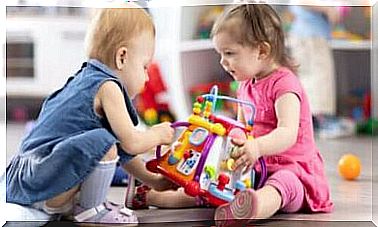How To Prevent Children From Having A Sedentary Lifestyle

It is becoming more common for children to have a sedentary lifestyle, and this puts their mental and physical health at risk. One of the main reasons for this is that they use electronics too much.
This is according to reports published by the Canadian Institute of Public Health, where only 1 in 10 children receive the recommended amount of physical activity for their age.
It is no secret that a sedentary lifestyle has a negative impact on health. However, according to the World Health Organization (WHO) , almost 85% of the population do not exercise at all. If you do not want your children to be a part of this dangerous statistic, try using some of the following strategies.
Tips to prevent a sedentary lifestyle in children
- Find activities they like. You do not have to enter them in a competitive sport. It is enough for them to swim, cycle or dance regularly. Help them find the physical activity they enjoy the most.

- Look for something that suits their age. During the first years, the motivation to train will be to have fun with family and friends. Over time, children’s preferences change and they can begin to choose for themselves.
- Limit screen time. Whether they are watching TV, texting or playing a video game, the time they sit in front of a screen should be limited. Replace these activities with walks, games and board games.
- Remember that you are a role model. The biggest influence on your children in their early years is you. Make sure you exercise as part of your daily routine and set aside time to be together, talk and have fun as a family.
- Set goals. Start with short moments and simple activities that your children can easily do. Over time, and with practice, you increase the length and intensity. Achieving small goals will motivate them to stick to this healthy habit.
- Have a plan B for rainy days. It is easy to exercise outdoors to make the positive effects even greater and prevent a sedentary lifestyle. However, you can have a room in the house where you can move freely in when the weather is bad.
- Be understanding. Avoid pushing your kids to become high-performing athletes. Also be aware that not all children have the same abilities. Appreciate the differences in your children and learn to motivate them as individuals.
The benefits of physical activity
- Lower risk of diabetes, heart disease, cancer and osteoporosis
- Good mood
- Better self-esteem
- Better sleep quality
- Lower risk of anxiety and depression
Some dangers with a sedentary lifestyle for children
- Sudden mood swings due to inactivity. People who spend a lot of time in one place or with one and the same activity have a higher risk of developing mental disorders.
- Risk of cancer. Not moving and exercising for a long time increases the likelihood of developing colon and lung cancer, as well as endometriosis.

- Childhood obesity is on the rise worldwide. This is largely due to a sedentary lifestyle and poor eating habits. Obesity can cause cardiovascular problems and diabetes.
- Problems with the development of muscles and bones. For children, a sedentary lifestyle leads to joints and muscles becoming weak and undeveloped. Children who do not get exercise are likely to have problems with the back, neck, lower extremities and problems with muscle tone.
- Circulatory diseases. Staying in the same position for long periods restricts blood circulation throughout the body. Over time, the veins deteriorate and cease to function properly. This is called venous insufficiency and can lead to more serious problems such as varicose veins and pulmonary embolism.
- Decreased brain function. Both at school and at home, children should be active and change position often. This keeps their brains warm and in shape to produce ideas and learn new things.
In summary…
Motivating children’s interest in physical activity is a time-consuming task for parents, educators and teachers. A large part of your child’s physical and intellectual development depends on it.
Start by getting them involved in a sport from an early age to build this important habit. Guide them in this process and take care of your own health at the same time.









